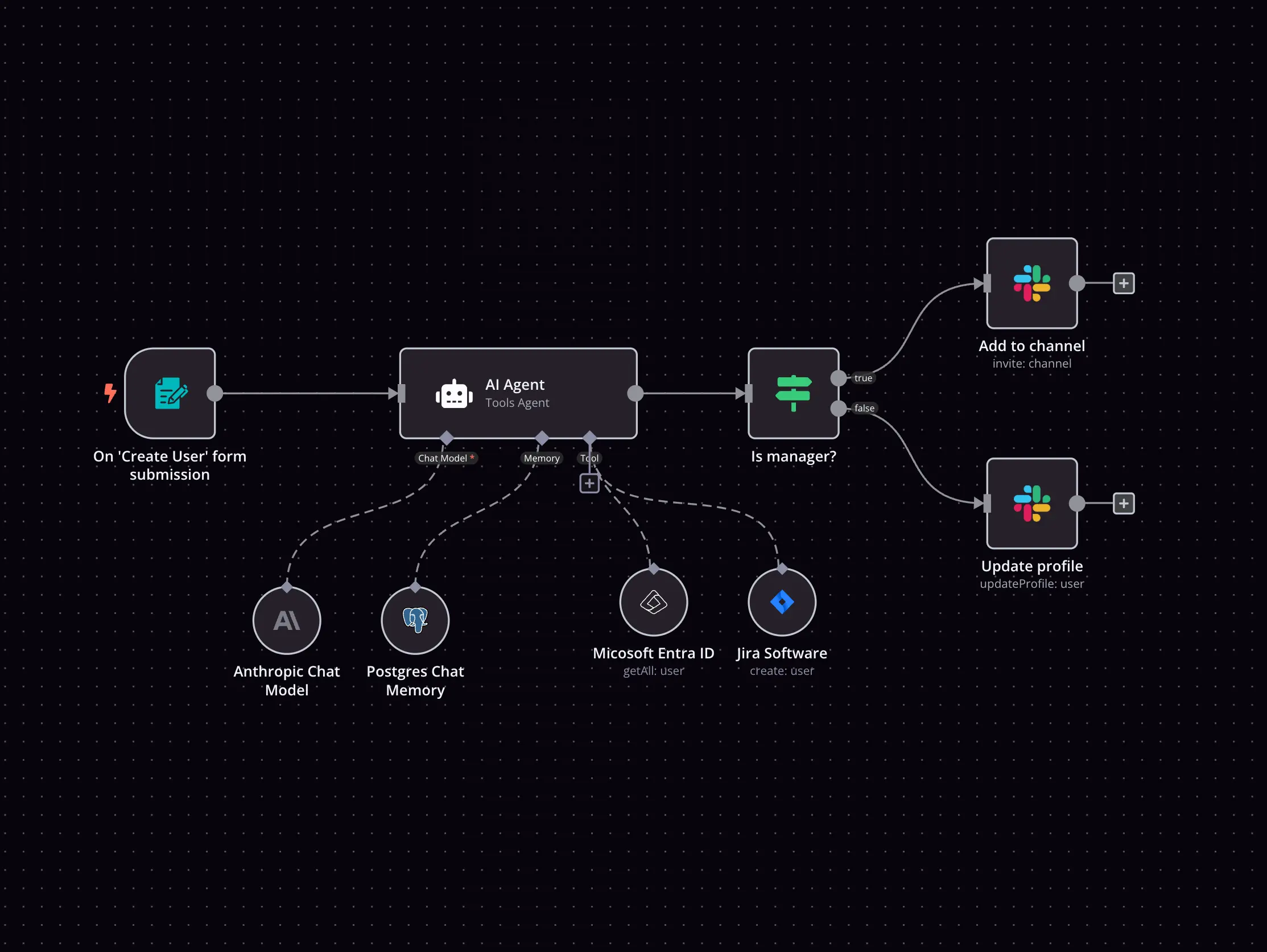Webhook and Airtable integration
Save yourself the work of writing custom integrations for Webhook and Airtable and use n8n instead. Build adaptable and scalable Development, Core Nodes, workflows that work with your technology stack. All within a building experience you will love.
How to connect Webhook and Airtable
Create a new workflow and add the first step
In n8n, click the "Add workflow" button in the Workflows tab to create a new workflow. Add the starting point – a trigger on when your workflow should run: an app event, a schedule, a webhook call, another workflow, an AI chat, or a manual trigger. Sometimes, the HTTP Request node might already serve as your starting point.
Popular ways to use the Webhook and Airtable integration
Automate Call Scheduling with Voice AI Receptionist using Vapi, Google Calendar & Airtable
Technical stock analysis with Telegram, Airtable and a GPT-powered AI Agent
Automated Instagram Reels Workflow
AI Agent for project management and meetings with Airtable and Fireflies
Parse PDF with LlamaParse and save to Airtable
Voiceflow Demo Support Chatbot
Build your own Webhook and Airtable integration
Create custom Webhook and Airtable workflows by choosing triggers and actions. Nodes come with global operations and settings, as well as app-specific parameters that can be configured. You can also use the HTTP Request node to query data from any app or service with a REST API.
Airtable supported actions
Get Many
List all the bases
Get Schema
Get the schema of the tables in a base
Create
Create a new record in a table
Create or Update
Create a new record, or update the current one if it already exists (upsert)
Delete
Delete a record from a table
Get
Retrieve a record from a table
Search
Search for specific records or list all
Update
Update a record in a table
Webhook and Airtable integration details
Webhook
Webhooks are automatic notifications that apps send when something occurs. They are sent to a certain URL, which is effectively the app's phone number or address, and contain a message or payload. Polling is nearly never quicker than webhooks, and it takes less effort from you.
Related categories
Webhook and Airtable integration tutorials

How to create an AI-driven tweet generator bot in 10 minutes
Lacking time or inspiration for your tweets? Then leverage OpenAI and n8n to generate tweets for you and store them in Airtable for further review.

Sending SMS the low-code way with Airtable, Twilio programmable SMS, and n8n
Learn to build a workflow to get customer information from Airtable and send SMS messages to them without writing a single line of code.
FAQ
Can Webhook connect with Airtable?
Can I use Webhook’s API with n8n?
Can I use Airtable’s API with n8n?
Is n8n secure for integrating Webhook and Airtable?
How to get started with Webhook and Airtable integration in n8n.io?
Need help setting up your Webhook and Airtable integration?
Discover our latest community's recommendations and join the discussions about Webhook and Airtable integration.

Date formatting and Airtable
Michael Wells
Describe the problem/error/question Hi all, I’m having a weird new issue with my Airtable step, regarding the date. As you can see [1] it’s arriving from the webhook as an ISO8601 date, but is resulting in an Airtable e…
Open topic

Retrieving body from a POST multipart/form-data request
Benjamin Hatton
Hi everyone, first of all, I’d like to say I’m really pleased to join the n8n community : I discovered n8n through SeaTable, and I really love it, thanks a lot for all this work and for maintaining a community version :+…
Open topic

Some webhooks not working
Albert Ashkhatoyan
Hey! I have Migrated my n8n instance to a new machine on AWS and added Postgres DB, Everything exported and imported and seems all workflows exist but some workflows with webhook trigger gives error connection timeout. I…
Open topic

Webhook timeout after wait node
Víctor González
Hello everyone, I made a n8n workflow trying to circumvent some limitations in a wordpress plugin I use called Funnelkit Automations. Funnelkit has a node based interface to build marketing automations, similar to n8n b…
Open topic

What happens if a webhook misses an event because the server was down?
Salomão
Let’s say I have a webhook listening for Stripe payment events and I’m updating my server exactly during the time of a purchase. What happens? And how to prevent missing events? Information on your n8n setup n8n vers…
Open topic
Looking to integrate Webhook and Airtable in your company?
The world's most popular workflow automation platform for technical teams including
Why use n8n to integrate Webhook with Airtable
Build complex workflows, really fast


